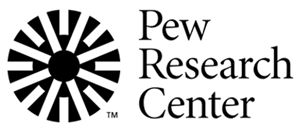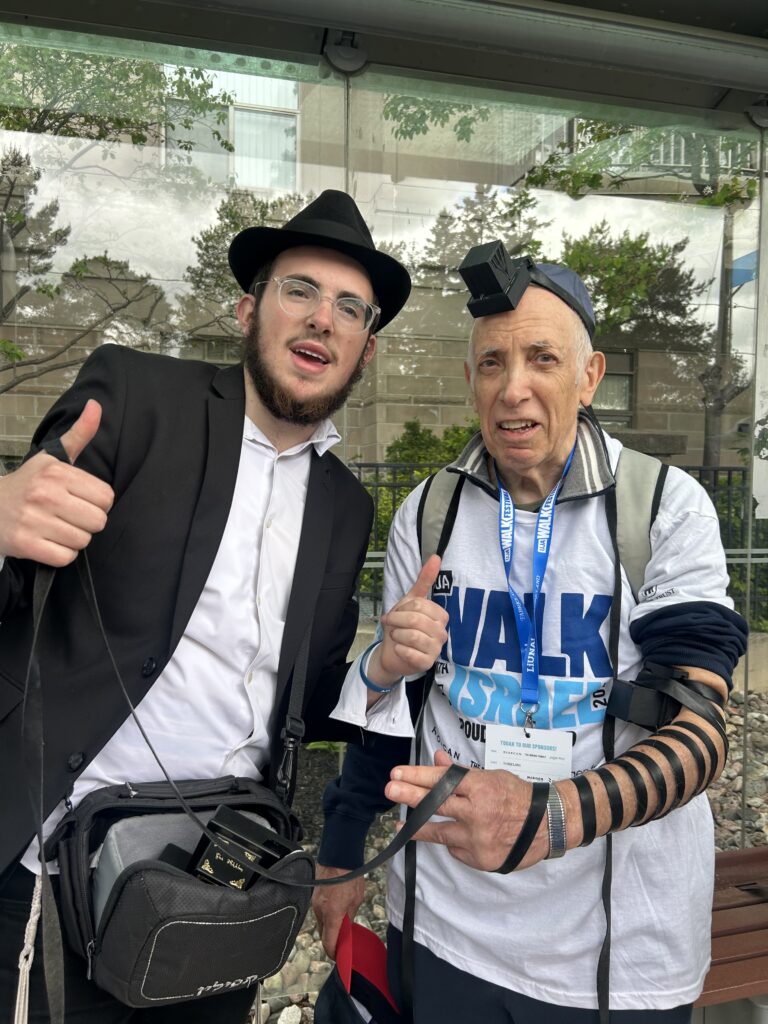Uncategorized
Jerry Izenberg covered 53 Super Bowls. His memoir covers his Jewish Newark upbringing.
(JTA) — Over the course of an illustrious 72-year career as a newspaper reporter, Jerry Izenberg has just about seen it all.
The longtime columnist for The Star-Ledger in Newark, New Jersey, Izenberg covered the first 53 Super Bowls. He’s been to 58 Kentucky Derbies, not to mention numerous Olympics, World Cups and boxing matches. He considered Muhammad Ali a close personal friend.
But the fiery 92-year-old, who still contributes to the paper as a columnist emeritus from his home in Nevada, doesn’t approve of the term “journalist.” He’s a newspaperman.
He dropped the name of Samuel Pepys, the 17th-century British diarist, as a contrast.
“Every day he took his big diary, and he wrote what he did this day, what he was planning to do later — that’s a journalist,” Izenberg told the Jewish Telegraphic Agency. “I’m not in my world. I’m in the world of other people trying to interpret and to repeat what values they have or what lack thereof they have.”
Izenberg’s latest story breaks that rule. His 17th book, which hits shelves on Monday, is a memoir about his Jewish upbringing in Newark. Titled “Baseball, Nazis, and Nedick’s Hot Dogs: Growing Up Jewish in the 1930s in Newark,” the memoir centers on Izenberg’s relationship with his father Harry, a World War I veteran and former minor league baseball player who passed on his love of the sport to his son.
Izenberg’s father emigrated to the United States as a child, leaving Lithuania with his family to escape anti-Jewish pogroms. As his sportswriter son recounts it, Harry discovered baseball even before he could speak English.
The Izenbergs’ love of baseball transcended all. When Jerry got his first baseball glove at ten years old, it was a milestone that in his father’s eyes surpassed even his bar mitzvah. (Maybe unsurprisingly, Izenberg would later skip bar mitzvah tutoring to play baseball after school.)
“He had given me a lifetime gift — a simple game and a simple shared love for it,” Izenberg writes in the memoir. “It remains there, bright and shining in memory eighty-three years later. In the soul of my memory, I see our kind of shared love of baseball again. It never fades.”
Jerry Izenberg and his father Harry shared a bond over baseball. (Book cover courtesy of The Sager Group, LLC; photograph courtesy of Jerry Izenberg)
The pair’s passion for baseball was closely intertwined with their Judaism. Growing up in Newark in the 1930s and 40s, Izenberg was a fan of the New York Giants baseball team (which left for San Francisco after the 1957 season). They featured a lineup filled with Jewish players: Harry Danning, Harry Feldman and Sid Gordon.
But in the pantheon of Jewish baseball during Izenberg’s childhood, there was a clear king, and — much to the chagrin of Izenberg’s father — he played in Detroit. Hank Greenberg, the greatest Jewish hitter in baseball history, was at the peak of his Tigers career from 1935-1940, winning two most valuable player awards on his way to the Hall of Fame.
At the Izenbergs’ dinner table, there were only a few select topics that were allowed to be discussed: baseball and the Nazis.
In 1938, Greenberg was chasing all-time great Babe Ruth’s single-season record of 60 home runs, which Ruth had set in 1927 with the Yankees. Greenberg would ultimately reach 58 homers, falling just short of history, while drawing several walks in the season’s final games.
“My dad was convinced that was antisemitism,” Izenberg said. “And I said to him, later on when I got into the business and I knew people, ‘did it ever occur to you that the guys who pitched against him didn’t want to be the guy who threw his 60th home run ball? They’d be linked to him forever.’ My father said, ‘That’s an interesting theory, but you’re full of crap.’”
Of all the anecdotes Izenberg shares of his memories with his father, one non-sports related scene stands out. And it has to do with that second dinner table topic.
One Saturday in 1939, Izenberg and his father went to the Newsreel Theatre in Newark, where audiences gathered to watch news and sports highlights of the week. That day, the theater showed footage of the infamous Madison Square Garden rally held by the German-American Bund, the American Nazi organization.
Izenberg remembers leaving the theater with his father, who was visibly angry. His father talked about how the Nazis — or, as he called them, mamzers, Yiddish slang for “bastards” — had to be stopped.
“I’m an 8-year-old kid, and I say, ‘But dad, they’re in Germany,’” Izenberg recalled. “And he looks at me, he says, ‘They’re not in Germany, they’re here.’ And he was right.” Indeed, following Hitler’s rise to power, Nazi-sympathizers could be seen marching down Newark’s streets.
The move theater incident is illustrated on the book’s cover — and was followed by a frequent father-son ritual: getting hot dogs at the popular chain Nedick’s.
To Izenberg, the virulent antisemitism of his youth — including the Bund, the reemergence of the Ku Klux Klan and the rise of Father Charles Coughlin, the antisemitic “radio priest” — is a corollary for the current state of antisemitism, which is again on the rise in the United States, punctuated, he said, by the 2017 antisemitic white nationalist rally in Charlottesville, which he blames on former President Donald Trump.
Izenberg said he doesn’t believe any law can force people to love or even like one another, but that “you could legislate people and pressure people into keeping their damn mouth shut.”
He went on: “And for 30 years, we had that. We got relief from antisemitism… And then one day in Charlottesville, that son of a bitch gave them the license to say whatever they want. And that was a trigger that lit the flame of antisemitism, which then began to grow all at once. It was always in their minds. But it was not fashionable. They made it fashionable.”
Despite the anti-Jewish sentiment that was ever-present in his youth, Izenberg said he has not faced antisemitism in his journalism career. As a columnist who has covered just about every sport, Izenberg has received his fair share of criticism — most notably having his car windows smashed by two men who did not approve of Izenberg’s defense of Muhammad Ali, when at the height of his career the boxer stirred controversy with his support for the Nation of Islam and his refusal to enlist in the military.
Jerry Izenberg, right, and boxer Muhammad Ali were close personal friends. (The Private Collection of Jerry Izenberg)
Izenberg has written about social issues frequently throughout his career — especially race relations — a tendency that he said is inspired by the value of “tikkun olam,” or repairing the world. It’s an idea he learned from Rabbi Joachim Prinz, the famous activist leader who spoke just before Martin Luther King Jr. at the 1963 March on Washington.
After leaving Nazi Germany, Prinz settled in Newark, on the same block as the Izenbergs. He would become a close family friend, and even offered to help Izenberg prepare for his bar mitzvah, despite the fact that his family belonged to a different synagogue.
Izenberg said he is guided by tikkun olam, “because I know [Prinz would] want me to keep it in the back of my mind, and my father would, too.”
“I’ve always tried not to fix the world — I don’t overrate myself that much — but I could fix the little part of it, the space that I take up,” he added. “And my job was a pathway to that.”
Izenberg’s decades-long career in sports journalism has earned him numerous accolades, including induction into 17 different halls of fame, among them the International Jewish Sports Hall of Fame and the National Sportscasters and Sportswriters Association Hall of Fame.
Along the way, he’s worked with and alongside a number of notable journalists, including ESPN reporter Jeremy Schaap, who previously hosted “Classic Sports Reporters,” for which he invited veteran sportswriters like Izenberg on the show to discuss various topics from sports history.
“For someone like me who really treasures that art form, Jerry was one of its master practitioners, and he’s still doing it, which is amazing,” Schaap told JTA.
Schaap hailed the breadth of Izenberg’s career, which he said epitomized the kind of big-city sports columnist that has become increasingly rare in the digital age.
“He’s a maniac, there’s no other way to put it,” Schaap said with a laugh. “All those Super Bowls, all those fights… the energy, the enthusiasm, the passion, all those things, in addition to the skills, makes him unique and has made him unique for decades.”
Schaap added that he and Izenberg shared a sort of unspoken bond over their Jewishness, and that Izenberg has taught Schaap a few Yiddishisms over the years. Izenberg’s tendency to slip Yiddish into his prose is evident in the memoir, from a comical retelling of his bris in the prologue to the frequent frustrated “genug” (“enough”) he heard from his mother as a child.
Ultimately, Izenberg said his parents represent the tachlis — the bottom line — of the memoir, and what he hopes readers take away from it. Izenberg said writing the memoir was cathartic for him, and that it even serves as a sort of love letter to his father.
“We were not, you know, ‘I love you dad,’” Izenberg said. “We were very respectful, but we didn’t express it. I tried to express it in this book. I hope I did.”
The release of Izenberg’s memoir is in no way a sign that the nonagenarian is slowing down. Even though he claims he works less than he used to, Izenberg said he plans to write six columns about next weekend’s Kentucky Derby.
He already has plans for his next few books, too — including a biography of New Jersey’s own Larry Doby, who was the second Black player in the MLB and first in the American League.
“I’ve had a great life, and I’m having a great life, but I ain’t done yet,” Izenberg said.
—
The post Jerry Izenberg covered 53 Super Bowls. His memoir covers his Jewish Newark upbringing. appeared first on Jewish Telegraphic Agency.
Uncategorized
How the Global Religious Landscape Changed from 2010 to 2020

Muslims grew fastest; Christians lagged behind global population increase
• Christians are the world’s largest religious group, at 28.8% of the global population. They are a majority everywhere except the Asia-Pacific and Middle East-North Africa regions. Sub-Saharan Africa has surpassed Europe in having the largest number of Christians. But Christians are shrinking as a share of the global population, as millions of Christians “switch” out of religion to become religiously unaffiliated.

• Muslims are the world’s second-largest religious group (25.6% of the world’s population) and the fastest-growing major religion, largely due to Muslims’ relatively young age structure and high fertility rate. They make up the vast majority of the population in the Middle East-North Africa region. In all other regions, Muslims are a religious minority, including in the Asia-Pacific region (which is home to the greatest number of Muslims).

• The religiously unaffiliated population is the world’s third-largest religious category (24.2% of the global population), after Christians and Muslims. Between 2010 and 2020, religiously unaffiliated people grew more than any group except Muslims, despite their demographic disadvantages of an older age structure and relatively low fertility. The unaffiliated made up a majority of the population in 10 countries and territories in 2020, up from seven a decade earlier.
• Hindus are the fourth-largest religious category (14.9% of the world’s population), after Christians, Muslims and religiously unaffiliated people. Most (99%) live in the Asia-Pacific region; 95% of all Hindus live in India alone. Between 2010 and 2020, Hindus remained a stable share of the world’s population because their fertility resembles the global average, and surveys indicate that switching out of or into Hinduism is rare.
• Buddhists (4.1% of the world’s population) are the only group in this report whose number declined worldwide between 2010 and 2020. This was due both to religious disaffiliation among Buddhists in East Asia and to a relatively low birth rate among Buddhists, who tend to live in countries with older populations. Most of the world’s Buddhists (98%) reside in the Asia-Pacific region, the birthplace of Buddhism.
• Jews, the smallest religious group analyzed separately in this report (0.2% of the world’s population), lagged behind global population growth between 2010 and 2020 – despite having fertility rates on par with the global average – due to their older age structure. Most Jews live either in North America (primarily in the United States) or in the Middle East-North Africa region (almost exclusively in Israel).
These are among the key findings of a Pew Research Center analysis of more than 2,700 censuses and surveys, including census data releases that were delayed due to the coronavirus pandemic. This report is part of the Pew-Templeton Global Religious Futures project, which analyzes global religious change and its impact on societies around the world. Funding for the Global Religious Futures project comes from The Pew Charitable Trusts and the John Templeton Foundation.
Uncategorized
Antisemitism in some unlikely places in America

By HENRY SREBRNIK Antisemitism flourishes in a place where few might expect to confront it – medical schools and among doctors. It affects Jews, I think, more emotionally than Judeophobia in other fields.
Medicine has long been a Jewish profession with a history going back centuries. We all know the jokes about “my son – now also my daughter – the doctor.” Physicians take the Hippocratic Oath to heal the sick, regardless of their ethnicity or religion. When we are ill doctors often become the people who save us from debilitating illness and even death. So this is all the more shocking.
Yes, in earlier periods there were medical schools with quotas and hospitals who refused or limited the number of Jews they allowed to be affiliated with them. It’s why we built Jewish hospitals and practices. And of course, we all shudder at the history of Nazi doctors and euthanasia in Germany and in the concentration camps of Europe. But all this – so we thought – was a thing of a dark past. Yet now it has made a comeback, along with many other horrors we assume might never reappear.
Since the Hamas attack on Israel on October 7, 2023, there has been a resurgence of antisemitism, also noticeable in the world of healthcare. This is not just a Canadian issue. Two articles on the Jewish website Tablet, published Nov. 21, 2023, and May 18, 2025, spoke to this problem in American medicine as well, referencing a study by Ian Kingsbury and Jay P. Greene of Do No Harm, a health care advocacy group, based on data amassed by the organization Stop Antisemitism. They identified a wave of open Jew-hatred by medical professionals, medical schools, and professional associations, often driven by foreign-trained doctors importing the Jew-hatred of their native countries, suggesting “that a field entrusted with healing is becoming a licensed purveyor of hatred.”
Activists from Doctors Against Genocide, American Palestinian Women’s Association, and CODEPINK held a demonstration calling for an immediate cease-fire in Gaza at the Hart Senate Office Building in Washington, D.C., Nov. 16, 2023, almost as soon as the war began. A doctor in Tampa took to social media to post a Palestinian flag with the caption “about time!!!” The medical director of a cancer centre in Dearborn, Michigan, posted on social media: “What a beautiful morning. What a beautiful day.” Even in New York, a physician commented on Instagram that “Zionist settlers” got “a taste of their own medicine.” A Boston-based dentist was filmed ripping down posters of Israeli victims and a professor at the University of Pennsylvania Perelman School of Medicine did the same. Almost three-quarters of American medical associations felt the need to speak out on the war in Ukraine but almost three-quarters had nothing to say about the war in Israel.
Antisemitism in academic medical centres is fostering noxious environments which deprive Jewish healthcare professionals of their civil right to work in spaces free from discrimination and hate, according to a study by the Data & Analytics Department of StandWithUs, an international, non-partisan education organization that supports Israel and fights antisemitism.
“Academia today is increasingly cultivating an environment which is hostile to Jews, as well as members of other religious and ethnic groups,” StandWithUs director of data and analytics, and study co-author, Alexandra Fishman, said on May 5 in a press release. “Academic institutions should be upholding the integrity of scholarship, prioritizing civil discourse, rather than allowing bias or personal agendas to guide academic culture.”
The study, “Antisemitism in American Healthcare: The Role of Workplace Environment,” included survey data showing that 62.8 per cent of Jewish healthcare professionals employed by campus-based medical centres reported experiencing antisemitism, a far higher rate than those working in private practice and community hospitals. Fueling the rise in hate, it added, were repeated failures of DEI (diversity, equity, and inclusion) initiatives to educate workers about antisemitism, increasing, the report said, the likelihood of antisemitic activity.
“When administrators and colleagues understand what antisemitism looks like, it clearly correlates with less antisemitism in the workplace,” co-author and Yeshiva University professor Dr. Charles Auerbach reported. “Recognition is a powerful tool — institutions that foster awareness create safer, more inclusive environments for everyone.”
Last December, the Data & Analytics Department also published a study which found that nearly 40 per cent of Jewish American health-care professionals have encountered antisemitism in the workplace, either as witnesses or victims. The study included a survey of 645 Jewish health workers, a substantial number of whom said they were subject to “social and professional isolation.” The problem left more than one quarter of the survey cohort, 26.4 per cent, “feeling unsafe or threatened.”
The official journal of the Alliance for Academic Internal Medicine concurs. According to “The Moral Imperative of Countering Antisemitism in US Medicine – A Way Forward,” by Hedy S. Wald and Steven Roth, published in the October 2024 issue of the American Journal of Medicine, increased antisemitism in the United States has created a hostile learning and practice environment in medical settings. This includes instances of antisemitic behaviour and the use of antisemitic symbols at medical school commencements.
Examples of its impact upon medicine include medical students’ social media postings claiming that Jews wield disproportionate power, antisemitic slogans at the University of California, Los Angeles (UCLA) David Geffen School of Medicine, antisemitic graffiti at the University of California, San Francisco (UCSF) Cancer Centre, Jewish medical students’ exposure to demonization of Israel diatribes and rationalizing terrorism; and faculty, including a professor of medicine at UCSF, posting antisemitic tropes and derogatory comments about Jewish health care professionals. Jewish medical students’ fears of retribution, should they speak out, have been reported. “Our recent unpublished survey of Jewish physicians and trainees demonstrated a twofold increase from 40% to 88% for those who experienced antisemitism prior to vs after October 7,” they stated.
In some schools, Jewish faculty are speaking out. In February, the Jewish Faculty Resilience Group at UCLA accused the institution in an open letter of “ignoring” antisemitism at the School of Medicine, charging that its indifference to the matter “continues to encourage more antisemitism.” It added that discrimination at the medical school has caused demonstrable harm to Jewish students and faculty. Student clubs, it said, are denied recognition for arbitrary reasons; Jewish faculty whose ethnic backgrounds were previously unknown are purged from the payrolls upon being identified as Jews; and anyone who refuses to participate in anti-Zionist events is “intimidated” and pressured.
Given these findings, many American physicians are worried not only as Jewish doctors and professionals, but for Jewish patients who are more than ever concerned with whom they’re meeting. Can we really conceive of a future where you’re not sure if “the doctor will hate you now?”
Henry Srebrnik is a professor of political science at the University of Prince Edward Island.
Uncategorized
The 2025 Toronto Walk (and talk ) for Israel

By GERRY POSNER There are walks and then there are walks. The Toronto UJA Walk for Israel on May 25, 2025 was one of a kind, at least as far as Canada and Jews are concerned. The number of people present was estimated to be 56,000 people or 112,000 total shoes. (How they get to that number is bewildering to me, since there is no one counting). This was 6,000 more than last year. Whether it is true or not, take it from me, it was packed. The synagogues in Canada should be so fortunate to get those numbers in total on High Holidays. The picture here gives you a sense of the size of the crowd.

This was my first walk in Toronto for Israel and I was with my granddaughter, Samantha Pyzer (not to forget her two friends whom she managed to meet at the site, no small feat, even with iPhones as aids). The official proceedings began at 9:00 a.m. and the walk at 10:00 a.m. There was entertainment to begin with, also along the way, and at the finish as well. The finish line this year was the Prosserman Centre or the JCC as it often called. The walk itself was perhaps 4 kilometres – not very long, but the walking was slow, especially at the beginning. There were lots of strollers, even baby carriages, though I did not see any wheelchairs. All ages participated on this walk. I figured, based on what I could see on the faces of people all around me that, although I was not the oldest one on the walk, I bet I made the top 100 – more likely the top 20.
What was a highlight for me was the number of Winnipeggers I met, both past and present. Connecting with them seemed to be much like a fluke. No doubt, I missed la lot of them, but I saw, in no particular order (I could not recall the order if my life depended on it): Alta Sigesmund, (who was, a long time ago, my daughter Amira’s teacher), Marni Samphir, Karla Berbrayer and her husband Dr. Allan Kraut and family. Then, when Samantha and I made it to the end and sat down to eat, I struck up a conversation with a woman unknown to me and as we chatted, she confirmed her former Winnipeg status as a sister-in- law to David Devere, as in Betty Shwemer, the sister of Cecile Devere. I also chanced upon Terri Cherniack, only because I paused for a moment and she spotted me. As we closed in near the finish, I met ( hey were on their way back), Earl and Suzanne Golden and son Matthew, as well as Daniel Glazerman. That stop caused me to lose my granddaughter and her pals. Try finding them amid the noise and size of the crowd – but I pulled it off.

As I was in line to get food, I started chatting with a guy in the vicinity of my age. I dropped the Winnipeg link and the floodgates opened with “ Did I know Jack and Joanie Rusen?” So that was an interesting few minutes. And I was not too terribly surprised to come across some of my Pickleball family. All of these meetings, along with spotting some of my sister’s family and other cousins, were carried on with the sound of the shofar as we moved along the way. In short, this was a happening. Merchants selling a variety of products, many of them Israeli based, were in evidence and, of course, the day could not have ended without the laying of tefillin, aided by Chabad, who have perfected the procedure to take less than a minute. See the photo. Chabad had a willing audience.
Aside from the joy of sharing this experience with my granddaughter, the very presence of all these Jews gathered together for a common reason made this day very special to me. However, there was a downside to the day. The downside was that, as we began to walk back to our car there was no other way I could figure out how to return when the rains came and came. While we walked faster, we were impeded by pouring rain and puddles. But Samantha wanted to persevere, as did I. We made it, but were drenched. My runners are still drying out as I write this two days later.
What with being surrounded by 56,000 people, the noise, the slow walking, and the rain, I can still say the day was a real highlight for me – one of the better moments since our arrival in Toronto in 2012. As well as the photos we took along the way, I have the reminder of the day, courtesy of the UJA, as evidenced from the photo. It was not just the walk, but the talk that accompanied the walk that made it so worthwhile for me. I would do it again, minus the rain.
